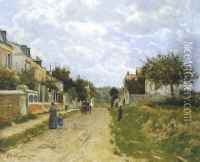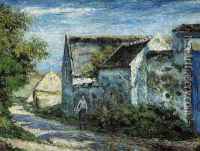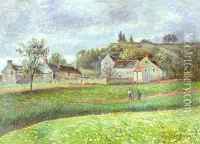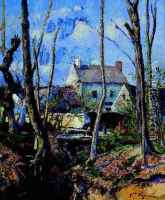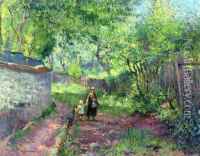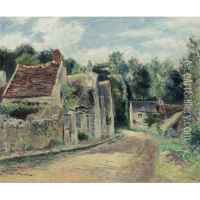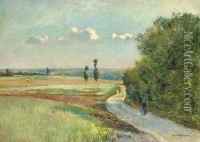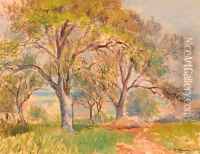Victor-Alfred-Paul Vignon Paintings
Victor-Alfred-Paul Vignon, often known simply as Victor Vignon, was a French Impressionist painter born on January 29, 1847, in Villers-Cotterêts, France. He is less widely known than some of his contemporaries, such as Claude Monet or Pierre-Auguste Renoir, but he was an active participant in the Impressionist movement and his work is respected for its quality and contribution to the genre.
Vignon started his artistic education under the tutelage of a local landscape painter before moving to Paris to further his studies. There, he worked under Camille Corot and later, Camille Pissarro, two artists who greatly influenced his style. Corot's influence is evident in Vignon's delicate handling of light and atmospheric effects, while Pissarro's impact can be seen in his choice of everyday life and rural landscapes as subjects for his paintings.
Despite his associations, Vignon developed his own distinctive approach. He was particularly adept at depicting the effects of snow on the landscape, a subject that fascinated him throughout his career. His style is characterized by a subtle palette and a soft, diffuse light that gives his paintings a serene, almost ethereal quality.
Vignon exhibited with the Impressionists from the late 1870s and was involved in the fourth Impressionist exhibition in 1879. Although not as commercially successful as some of his peers, he gained recognition among his fellow artists and a number of discerning collectors. His work was supported by the art dealer Paul Durand-Ruel, who was a key figure in promoting the Impressionists.
Financial struggles, however, marked much of Vignon's life, and he did not achieve significant fame during his lifetime. Despite this, he continued to paint and exhibit his work, remaining dedicated to the Impressionist style until his death on April 21, 1909, in Meulan-en-Yvelines, France.
Today, Victor Vignon's works are held in several museums and private collections around the world. While he may not be a household name, his contributions to the Impressionist movement continue to be appreciated by art historians and collectors alike.

